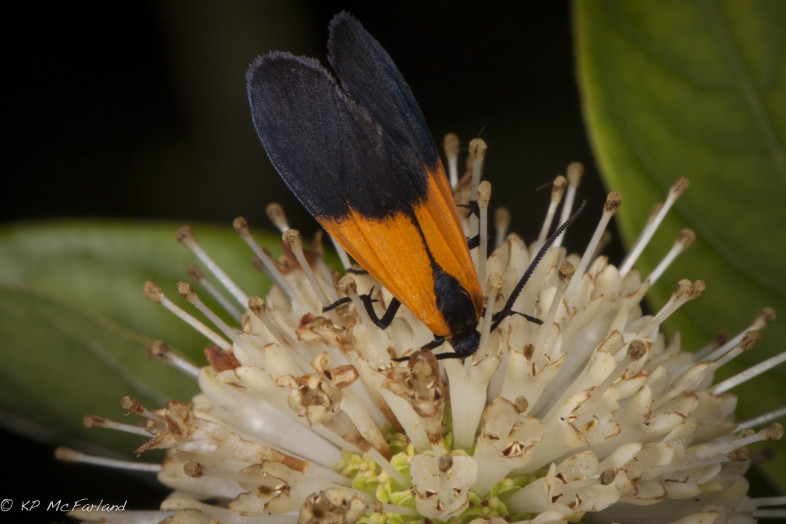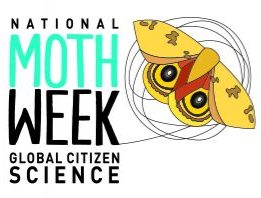
Black-and-yellow Lichen Moth (Lycomorpha pholus) sipping nectar from Buttonbush (Cephalanthus occidentalis). / © K.P. McFarland
 National Moth Week celebrates the beauty, life cycles, and habitats of moths. “Moth-ers” of all ages and abilities are encouraged to learn about, observe, and document moths in their backyards, parks, and neighborhoods. Held worldwide during the last full week of July, National Moth Week offers everyone, everywhere a unique opportunity to become a citizen scientist and contribute information about moths. Through partnerships with major online biological data depositories, participants can help map moth distribution and provide needed information on other life history aspects around the globe. Here at VCE, we map moth distribution throughout the year on iNaturalist Vermont, a project of the Vermont Atlas of Life.
National Moth Week celebrates the beauty, life cycles, and habitats of moths. “Moth-ers” of all ages and abilities are encouraged to learn about, observe, and document moths in their backyards, parks, and neighborhoods. Held worldwide during the last full week of July, National Moth Week offers everyone, everywhere a unique opportunity to become a citizen scientist and contribute information about moths. Through partnerships with major online biological data depositories, participants can help map moth distribution and provide needed information on other life history aspects around the globe. Here at VCE, we map moth distribution throughout the year on iNaturalist Vermont, a project of the Vermont Atlas of Life.
How many moth species can we find during moth week?
We encourage you to add your photographs of moths too. Finding moths can be as simple as leaving a porch light on and checking it after dark. Serious moth aficionados use special lights and baits to attract them. Check out this short introduction on how to start mothing. Its easy and fun!
Thanks to the tireless efforts of both professional and amateur Lepidopterists, since the 1995 landmark publication Moths and Butterflies of Vermont: A Faunal Checklist, nearly 400 new moth species have been found in Vermont. Preliminary results show us that there are now over 2,200 species of moths known from Vermont. And, there are likely many more awaiting our discovery.
Since 2013, professional biologists and naturalists have contributed moth observations to the Vermont Atlas of Life through our iNaturalist Vermont. Many of us turn on special lights in our backyards on summer nights to find hundreds of moths and other insects gathering on our sheets, hunt fields and forest for day-flying moths, and place rotten fruit bait out to attract other moths. Many of these moths can be identified from good photographs (although some are impossible without dissection and examination under a microscope). With today’s amazing digital photography technology, coupled with the newer Peterson’s Field Guide to Northeastern Moths and web sites like iNaturalist Vermont, BugGuide, Moth Photographers Group, or Moths of Eastern North America Facebook Group, moth watching (aka mothing) has become increasingly popular.
Moth watchers have added a whopping 91 news species to the Vermont checklist via iNaturalist Vermont and have documented over 865 species across the state. What’s even more amazing is that we’ve recorded over 15,000 moth observations, which help to understand their phenology, habitat use and range in Vermont like never before.
